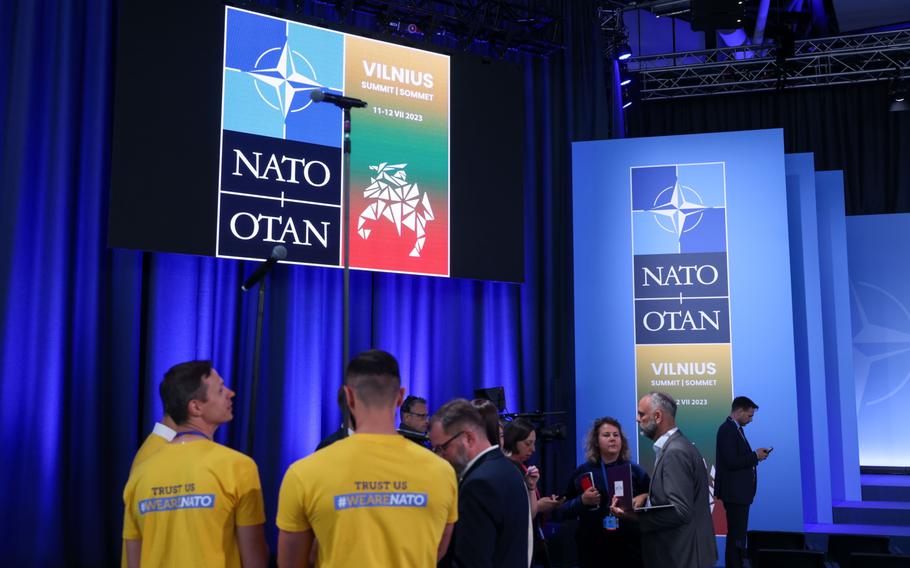
NATO leaders will meet in Vilnius, Lithuania, this week for an annual summit. (Andrey Rudakov/Bloomberg)
Canadian Prime Minister Justin Trudeau said his country will more than double the number of its troops in Latvia to help shore up NATO’s eastern flank against potential Russian aggression.
The North Atlantic Treaty Organization member will deploy as many as 1,200 new personnel to boost the Canadian-led battle group in Latvia as it expands to a combat-capable brigade, Trudeau said Monday at a military base in Adazi, Latvia. He announced an investment of C$2.6 billion ($2 billion) in weapons, intelligence and cyberactivity.
“We’re here because European security is important to Canadian security,” Trudeau told reporters alongside Latvian Prime Minister Krisjanis Karins.
Canada has led a multinational NATO battle group in Latvia for six years and currently has about 800 of its own soldiers there. The force is one of four NATO Enhanced Forward Presence battle groups in the region.
This operation is Canada’s largest overseas mission, with up to 2,200 troops to be persistently deployed, Trudeau’s office said in a news release.
Canada stands ready to deploy additional surge personnel for allied crisis response, cooperative security and collective defense, the government said in the release, adding it will also procure and preposition critical weapon systems and supplies.
The Baltic nations, which since the end of the Soviet Union have warned of Russian attempts to claw back territory, have for years urged allies to bolster their troop presence permanently in the region to deter Russia from attacking.
Canada’s decision follows a surprise announcement in June by German Defense Minister Boris Pistorius, who said Germany was prepared to station a permanent brigade of about 4,000 troops in Lithuania — though the move is likely years away. The conditions for such a presence are an expansion of infrastructure, including barracks and depots, as well as coordination with NATO’s defense plans.
As part of a wider overhaul of NATO’s defenses, allies in Madrid last year agreed to a compromise solution — committing to scale up in an emergency eight multinational battle groups to brigade size, which can involve as many as 5,500 troops.
The plan didn’t necessarily involve stationing troops in eastern countries permanently, but rather identifying units at home that can be deployed at short notice and linking up with national and allied troops already on the ground. That rotation plan would give allied commanders more flexibility to deploy troops to other parts of the alliance.
But for countries like Canada, which leads the multinational battle group in Latvia, rapidly deploying troops to brigade size across the Atlantic within a matter of days would be a challenge.
“If nations want to do more, that is their choice, that is not a problem,” Rob Bauer, the chair of NATO’s military committee, told reporters last week. “But I would be cautious to have all the forces fixed along the eastern flank, because we do not know where the enemy will come. And if they come somewhere else, then you have those forces in the wrong place.”
Canada has also been engaging more closely with the Baltic states at a diplomatic level by converting its missions in Lithuania and Estonia to full embassies. Canada’s first resident ambassador to Lithuania, Jeanette Sautner, presented credentials to Lithuanian President Gitanas Nauseda on Monday.
Bloomberg’s Laura Dhillon Kane contributed to this report.